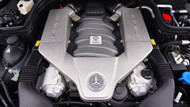Interference vs Non-Interference Engines: Key Differences
18th Jul 2017

Petrol-powered combustion engines are typically classified as either interference or non-interference. While there are dozens of different types of engines, nearly call can be broken down into one of these two categories. As a driver, it's important to understand the difference between interference and non-interference engines, as this could increase the need for certain maintenance.
Opening of Valves
The key difference between an interference and non-interference engine lies in the way in which the valves open. Interference engines are 4-stroke engines that open one or more valves to fully accommodate the area in which the pistons enter. In comparison, non-interference engines feature pistons that do not travel into the open valves.
Advantages of Interference Engines
Many automakers prefer using interference engines, simply because the design offers an improved compression ratio. As you may already know, compression ratio is the ratio of the volume of an engine's combustion chamber, from the largest to smallest capacity. By filling the engine with more combustion, it allows for increased performance and fuel efficiency.
Disadvantages of Interference Engines
However, there are also disadvantages to interference engines. By design, interference engines are susceptible to critical failure in the event of a timing belt failure. If the timing belt snaps, the pistons will smash into the valves, causing serious (and costly) engine damage. The same cannot be said for non-interference engines. If the timing belt on a non-interference engine breaks, the pistons won't make contact with the valves; thus, there's little risk of catastrophic engine damage.
The Bottom Line
Other than the nuances in how the valves and pistons operate, there's really no other distinguishable difference between interference and non-interference engines. If your car has the former, however, you need to take a proactive approach towards maintaining and changing your timing belt. Assuming it's an actual belt and not a chain, the timing belt will likely corrode and deteriorate over time. Continuing to neglect a worn timing belt increases the risk of catastrophic engine damage.
For the average driver, changing a timing belt can be difficult. If you have the right tools and a manual, you may be able to do it yourself. Normally, however, drivers prefer to have their timing belt changed by a trusted mechanic. Timing belts aren't cheap to replace, but it's a necessary step in maintaining many vehicles, especially if the vehicle has an interference engine. Hopefully, this gives you a better understanding of the difference between interference and non-interference engines.

